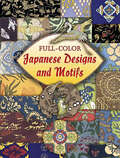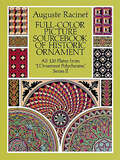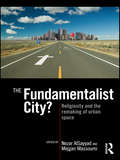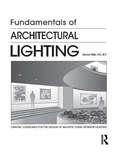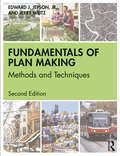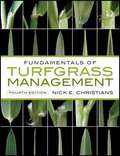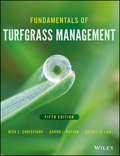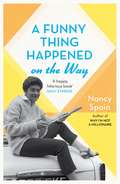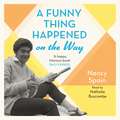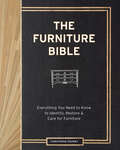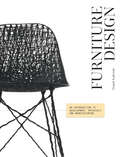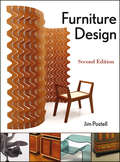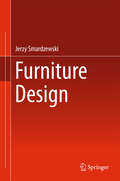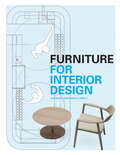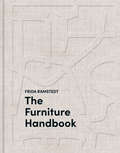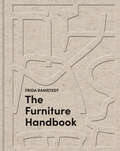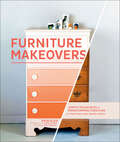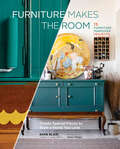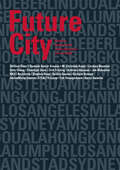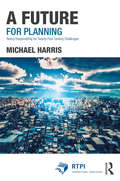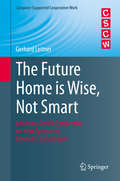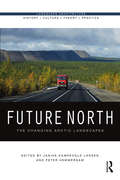- Table View
- List View
Full-Color Japanese Designs and Motifs (Dover Pictorial Archive)
by DoverThis rich array of exquisite designs includes all the most popular Japanese motifs. Ferocious dragons with scaly skins, cranes with wide-spread wings, as well as tigers, phoenixes, and peacocks abound; so do lush peonies and many other flowers, plants, and animal designs. Geometric, abstract, and allover patterns are also included. More than 130 dazzling, royalty-free images -- reproduced from rare nineteenth-century portfolios -- are ideal for direct use in art and craft projects. They'll also serve as a wondereful source of inspiration for any design work calling for authentic Japanese flavor.
Full-Color Picture Sourcebook of Historic Ornament: All 120 Plates from "L'Ornement Polychrome," Series II (Dover Fine Art, History of Art)
by Auguste RacinetClassic sourcebook of spectacular royalty-free design collages, featuring over 1,500 decorative elements and motifs from major cultures in history through the 19th century, from Asia and Africa to Europe and the Americas. Adapted from jewelry, illuminated manuscripts, weapons, tiles, carved wood panels, ceilings, inlay, hardware, ceramics and more.
The Fundamentalist City?: Religiosity and the Remaking of Urban Space
by Nezar AlSayyadThe relationship between urbanism and fundamentalism is a very complex one. This book explores how the dynamics of different forms of religious fundamentalisms are produced, represented, and practiced in the city. It attempts to establish a relationship between two important phenomena: the historic transition of the majority of the world’s population from a rural to an urban existence; and the robust resurgence of religion as a major force in the shaping of contemporary life in many parts of the world. Employing a transnational interrogation anchored in specific geographic regions, the contributors to this volume explore the intellectual and practical challenges posed by fundamentalist groups, movements, and organizations. They focus on how certain ultra religious practices of Christianity, Hinduism, Islam, and Judaism have contributed to the remaking of global urban space. Their work suggests that it is a grave oversimplification to view religious orthodoxies or doctrines as the main cause of urban terrorism or violence. Instead they argue that such phenomena should be understood as a particular manifestation of modernity’s struggles. Nezar AlSayyad and Mejgan Massoumi’s book provides fascinating reading for those interested in religion and the city, with thought provoking pieces from experts in anthropology, geography sociology, religious studies, and urban studies.
Fundamentals of Architectural Lighting
by Samuel MillsThe theme of this book is that light is an inseparable part of architectural design, and is intended to provide students of architecture and interior design with a graphic guideline to the fundamental role lighting plays in this process. While simple light sources may be enough to satisfy practical needs, the design process must expand beyond basic illumination. The challenge for architects and designers is the creation of luminous environments offering visual interest and a sense of well-being, while also meeting basic seeing needs. Technological advances provide opportunities for the lighting designer's creative introduction of light, and the visual and psychological perceptions of the illuminated architectural environment. Fundamentals of Architectural Lighting offers a complete comprehensive guide to the basics of lighting design, equipping students and practitioners with the tools and ideas they need to master a variety of lighting techniques. The book is extensively illustrated with over 250 illustrations to demonstrate basic principles and procedures. It is an excellent resource for anyone interested in the fundamentals of integrated lighting for architectural interior spaces.
Fundamentals of Plan Making: Methods and Techniques
by Jerry Weitz Edward J. Jepson, Jr.Urban and regional planning programs aspire to prepare practitioners to write and implement comprehensive plans. Yet, academic planning programs often place greater emphasis on theory than practice. To help address this gap, Fundamentals of Plan Making gives planning students an understanding of research and methods of analysis that apply to comprehensive planning. Its informative text and examples will help students develop familiarity with various data sources and acquire the knowledge and ability to conduct basic planning analyses such as population projections, housing needs assessments, development impact analyses, and land-use plans. Students will also learn how to implement the various citizen participation methods used by planners and develop an appreciation of the values and roles of practicing planners. In this revised second edition, Edward Jepson and Jerry Weitz bring their extensive experience as practicing planners and teaching faculty to give planning students the practical, hands-on tools they need to create and implement real plans and policies. With an entirely new census data set, expanded discussions of sustainability and other topics, as well as new online resources—including a companion website—the book is now more accessible and more informative, and its updated chapters on transportation, housing, environment, economic development, and other core planning elements also make it a handy reference for planning practitioners.
Fundamentals of Real Estate Appraisal
by Martha Williams William VentoloFundamentals of Real Estate Appraisal is a classic text in the field, first published in 1975 and still updated by the original authors. The latest edition of this best-selling text provides a strong foundation for understanding the modern real estate appraisal market. New discussion includes the modern appraisal office, gross living area, the division of outdoor spaces, the concept of curb appeal, interior house design, landscaping plans, Historical Landmark Designation, retrospective value, and financial calculators. This edition includes learning objectives and unit review questions. Additionally, this text covers the basic principles and procedures requirements of the Appraiser Qualifications Board.
Fundamentals of Turfgrass Management
by Nick ChristiansNow revised & updated -- the essential book on turfgrass management!The new edition of Fundamentals of Turfgrass Management introduces the principles of turfgrass management, covering everything from basic turfgrass science to fertilization, mowing, turfgrass diseases, irrigation topdressing, pest management, as well as career paths, and much more.With an emphasis on explaining why certain management practices are handled as they are, this new edition: Incorporates updates throughout with special emphasis on pesticides, herbicides, insecticides, fungicides, and soil testing Contains expanded coverage of physiology, water quality and seed production, seed certification, and seed buying Offers step-by-step advice on the selection and maintenance of turfgrasses Includes the latest information on cutting-edge fertilization research, mowing techniques, and sports field management practices Features a full-color identification guide that covers the most common grasses and weedsWritten on a level suitable for students, but with a wealth of information useful to experienced turfgrass managers, Fundamentals of Turfgrass Management, Fourth Edition provides a solid yet flexible grounding that readers can apply and adapt on the job to nearly any situation.
Fundamentals of Turfgrass Management
by Nick E. Christians Aaron J. Patton Quincy D. LawThe classic turfgrass management handbook, updated with new developments in the field Fundamentals of Turfgrass Management is the bestselling guide with expert coverage of basic turfgrass science and all aspects of practical care. Now in its fifth edition, this industry favorite offers the latest information on growth, nutrition, herbicides, insecticides, and fungicides, as well as new chapters discussing shade stress and light requirements and the benefits of turf. Though written at an introductory level, this book provides experienced turf managers with the most current thinking and new developments in wide range of topics, such as fertilization, grass selection, pest management, plant growth regulators, sports turf management practices, soil testing, and water quality. For students and experienced professionals alike, this book provides a thorough and well-rounded reference with everyday utility. Today’s turf managers must have detailed knowledge of agronomy, botany, entomology, horticulture, pathology, and business management. This book brings these diverse fundamentals together into a single volume and will help you to: Master the art and science of turfgrass care, cultivation, and management Learn best practices for mowing, fertilizing, soil health, irrigation, and more Identify, manage, and control insect, disease, and weed pests Examine the professional management of sports turf, golf courses, lawns, and sod Turf management is a $70 billion industry that reaches into sports, tourism, land management, real estate, and more. The care and maintenance of high quality turf requires careful consideration and monitoring of many variables, and both strategic planning and quick action are needed to stay ahead of threats from weather, pests, traffic, and more. Fundamentals of Turfgrass Management provides clear guidance and comprehensive coverage of all aspects of the industry, with the latest information all turf managers need to know.
A Funny Thing Happened On The Way: Discover the 1960s trend for buying land on a Greek island and building a house. How hard could it be…?
by Nancy Spain<p>The superb classic memoir from a dazzlingly eccentric and endlessly fascinating author and feminist icon - a woman very much ahead of her time - including her time spent on the glorious island of Skiathos<p> <p>Nancy Spain was one of the most celebrated - and notorious - writers and broadcasters of the 50s and 60s. Witty, controversial and brilliant, she lived openly as a lesbian (sharing a household with her two lovers and their various children) and was frequently litigated against for her newspaper columns - Evelyn Waugh successfully sued her for libel... twice.<p> <p>Nancy Spain had a deep love of the Mediterranean. So it was no surprise when, in the 1960s, she decided to build a place of her own on the Greek island of Skiathos. With an impractical nature surpassed only by her passion for the project, and despite many obstacles, she gloriously succeeded. This classic memoir is infused with all Spain's chaotic brilliance, zest for life and single-minded pursuit of a life worth living.<p>
A Funny Thing Happened On The Way: Discover the 1960s trend for buying land on a Greek island and building a house. How hard could it be…?
by Nancy SpainThe superb classic memoir from a dazzlingly eccentric and endlessly fascinating author and feminist icon - a woman very much ahead of her time - including her time spent on the glorious island of Skiathos'A happy, hilarious book' Daily ExpressNancy Spain was one of the most celebrated - and notorious - writers and broadcasters of the 50s and 60s. Witty, controversial and brilliant, she lived openly as a lesbian (sharing a household with her two lovers and their various children) and was frequently litigated against for her newspaper columns - Evelyn Waugh successfully sued her for libel... twice.Nancy Spain had a deep love of the Mediterranean. So it was no surprise when, in the 1960s, she decided to build a place of her own on the Greek island of Skiathos. With an impractical nature surpassed only by her passion for the project, and despite many obstacles, she gloriously succeeded. This classic memoir is infused with all Spain's chaotic brilliance, zest for life and single-minded pursuit of a life worth living.Perfect for fans of A PLACE IN THE SUN and ESCAPE TO THE COUNTRY'Full of fun, and that zest of intelligence that never left her' Sunday Times
The Furniture Bible: Everything You Need to Know to Identify, Restore & Care for Furniture
by Martha Stewart Jen Renzi Christophe PournyChristophe Pourny learned the art of furniture restoration in his father’s atelier in the South of France. In this, his first book, he teaches readers everything they need to know about the provenance and history of furniture, as well as how to restore, update, and care for their furniture—from antiques to midcentury pieces, family heirlooms or funky flea-market finds. The heart of the book is an overview of Pourny’s favorite techniques—ceruse, vernis anglais,and water gilding, among many others—with full-color step-by-step photographs to ensure that readers can easily replicate each refinishing technique at home. Pourny brings these techniques to life with a chapter devoted to real-world refinishing projects, from a veneered table to an ebonized desk, a gilt frame to a painted northern European hutch. Rounding out this comprehensive guide is care and maintenance information, including how to properly clean leather, polish hardware, fix a broken leg, and replace felt pads, as well as recipes to make your own wax, shellac, varnish, stain, and more.
Furniture Design: An Introduction To Development, Materials And Manufacturing
by Stuart LawsonFurniture Design is a comprehensive guide and resource for students and furniture designers. As well as discussing pioneering contemporary and historical designs, it also provides substantive answers to designers’ questions about function, materials, manufacture and sustainability, integrating guidance on all of these subjects – particularly material and manufacturing properties, in one accessible and structured volume. Many leading contemporary furniture designers from around the world are included, with case studies carefully selected to highlight the importance of both material and manufacture-led design processes. The book is also intended to provide an insight into furniture design for those considering a university education in product and industrial design.
Furniture Design: An Introduction to Development, Materials, Manufacturing
by Stuart LawsonFurniture Design is a comprehensive guide and resource for students and furniture designers. As well as discussing pioneering contemporary and historical designs, it also provides substantive answers to designers’ questions about function, materials, manufacture and sustainability, integrating guidance on all of these subjects – particularly material and manufacturing properties, in one accessible and structured volume. Many leading contemporary furniture designers from around the world are included, with case studies carefully selected to highlight the importance of both material and manufacture-led design processes. The book is also intended to provide an insight into furniture design for those considering a university education in product and industrial design.
Furniture Design
by Jim PostellThe comprehensive guide to furniture design— expanded and updated Furniture designers draw on a range of knowledge and disciplines to create their work. From history to theory to technology, Furniture Design offers a comprehensive survey of the essential craft- and practice-related aspects of furniture design. Generously illustrated with photographs and drawings—including a new color section—this Second Edition features updated coverage of material specifications, green design, digital design, and fabrication technologies. It also features twenty-five case studies of furniture design that represent a broad selection of works, designers, and techniques, including recent designs produced within the last decade. The book explores: Furniture function and social use Form, spatial organization, and typological orders Structural integrity and composition Accessibility, universal design, human factors, and ergonomics The design process, from schematics through fabrication Materials, processes, and methods of fabrication Professional practice and marketing The history of furniture design, from prehistory to the digital age Complete with a glossary of terms and a comprehensive bibliography, Furniture Design, Second Edition is a one-stop resource that furniture designers will turn to regularly for the advice, guidance, and information needed to perform their craft.
Furniture Design
by Jerzy SmardzewskiMaximizing reader insights into the principles of designing furniture as wooden structures, this book discusses issues related to the history of furniture structures, their classification and characteristics, ergonomic approaches to anthropometric requirements and safety of use. It presents key methods and highlights common errors in designing the characteristics of the materials, components, joints and structures, as well as looking at the challenges regarding developing associated design documentation. Including analysis of how designers may go about calculating the stiffness and endurance of parts, joints and whole structures, the book analyzes questions regarding the loss of furniture stability and the resulting threats to health of the user, putting forward a concept of furniture design as an engineering processes. Creating an attractive, functional, ergonomic and safe piece of furniture is not only the fruit of the work of individual architects and artists, but requires an effort of many people working in interdisciplinary teams, this book is designed to add important knowledge to the literature for engineer approaches in furniture design.
Furniture for Interior Design
by Drew PlunkettThis comprehensive, practical guide explores how contemporary furniture is used within interior design to define a space, create division and enclosure, and alter or redefine circulation. Initial chapters illustrate the different contexts in which furniture is used, from the office and domestic interiors to retail and exhibition space; look at types of furniture, whether off-the-shelf or bespoke; and explore the new vogue for recycling and vintage. Later chapters examine both traditional materials such as wood and the more unusual such as stone and glass, while also explaining new methods of manufacture – such as Computer Numerical Controlled and Selected Laser Sintering. The final chapter looks at how a design is developed, the site surveyed, prototypes made and specifications and schedules drawn up.Furniture for Interior Design is a detailed, highly illustrated guide to specifying and placing existing manufactured furniture, but also shows the reader how to design, detail, and commission batch-produced furniture or one-off, site-specific pieces.
Furniture for Interior Design
by Drew Plunkett Sam BoothThis comprehensive, practical guide explores how contemporary furniture is used within interior design to define a space, create division and enclosure, and alter or redefine circulation. Initial chapters illustrate the different contexts in which furniture is used, from the office and domestic interiors to retail and exhibition space; look at types of furniture, whether off-the-shelf or bespoke; and explore the new vogue for recycling and vintage. Later chapters examine both traditional materials such as wood and the more unusual such as stone and glass, while also explaining new methods of manufacture – such as Computer Numerical Controlled and Selected Laser Sintering. The final chapter looks at how a design is developed, the site surveyed, prototypes made and specifications and schedules drawn up.Furniture for Interior Design is a detailed, highly illustrated guide to specifying and placing existing manufactured furniture, but also shows the reader how to design, detail, and commission batch-produced furniture or one-off, site-specific pieces.
The Furniture Handbook: A Guide to Choosing, Arranging, and Caring for the Objects in Your Home
by Frida RamstedtThe comprehensive guide to living with furniture, no matter your style, from the author of The Interior Design Handbook. Interior-design sensation Frida Ramstedt changed how we think about designing a harmonious home with her book The Interior Design Handbook. Now she brings that same authoritative and comprehensive focus to this complementary guide that&’s all about the most essential and functional items within your home. No matter your style of home, we all want our spaces to feel inviting and comfortable. And the key to that is quality furniture that supports your lifestyle. The Furniture Handbook shares the foundational rules of choosing, arranging, and caring for the furniture in every room of your home. From selecting the perfect size dining table and seating that fits your family to arranging your living room pieces for the best flow, the basic principles that interior designers use and that everyone should master are provided.• Know what to pay extra attention to when choosing and rearranging furniture and what common complaints people have so you can avoid them.• Understand the dimensions and details of furniture design that determine whether a piece is comfortable or not.• Select quality upholstery that looks beautiful and will endure wear and tear from pets, kids, and daily life.• Learn how to match the scale of different pieces and plan what goes where before you start moving your furniture, so you never regret the time and money you have invested. Complete with simple and elegant illustrations, The Furniture Handbook is your key to creating beautiful, personal spaces in your home.
The Furniture Handbook: A Guide to Choosing, Arranging, and Caring for the Objects in Your Home
by Frida RamstedtThe comprehensive guide to living with furniture, no matter your style, from the author of The Interior Design Handbook.Interior-design sensation Frida Ramstedt changed how we think about designing a harmonious home with her book The Interior Design Handbook. Now she brings that same authoritative and comprehensive focus to this complementary guide that&’s all about the most essential and functional items within your home.No matter your style of home, we all want our spaces to feel inviting and comfortable. And the key to that is quality furniture that supports your lifestyle. The Furniture Handbook shares the foundational rules of choosing, arranging, and caring for the furniture in every room of your home. From selecting the perfect size dining table and seating that fits your family to arranging your living room pieces for the best flow, the basic principles that interior designers use and that everyone should master are provided.Know what to pay extra attention to when choosing and rearranging furniture and what common complaints people have so you can avoid them.Maximize form and function for the pieces in your home, so you have furniture that is practical, beautiful, and cohesive. Choose the right scale and materials for your space, regardless of how big or small.Understand the dimensions and details of furniture design that determine whether a piece is comfortable or not.Select quality upholstery that looks beautiful and will endure wear and tear from pets, kids, and daily life.Make better choices for every room in your home and create the space you want to live inComplete with simple and elegant illustrations, The Furniture Handbook is your key to creating beautiful, personal spaces in your home.
Furniture Makeovers: Simple Techniques for Transforming Furniture with Paint, Stains, Paper, Stencils, and More
by Holly Becker Barb Blair J. Aaron GreeneFurniture Makeovers shows how to transform tired furniture into stunning showpieces. You'll never look at a hand-me-down dresser the same way again! The book offers 26 easy-to-follow techniques that can be applied to all different types of pieces, from bookshelves to desks: painting, applying gold leaf, wallpapering, distressing, dip dyeing, and more. In addition to the core techniques, author and Knack Studios founder Barb Blair shares 30 beautiful before-and-after makeovers from her studio and outlines how to achieve each look. With helpful step-by-step photographs, a visual glossary explaining all the tools and materials needed, and a lovely contemporary aesthetic, Furniture Makeovers is a treasure trove of ideas and instruction for the home decorator.
Furniture Makes the Room: Create Special Pieces to Style a Home You Love
by Barb Blair Paige FrenchKnack Studio founder Barb Blair is famous for her "knack" with furniture: spotting classic pieces and transforming them into modern showstoppers. In this inspiring book, Blair goes beyond the nuts and bolts of furniture refinishing to show how to style rooms with each customized piece. For instance, she transforms a well-worn coffee table with a painted ombré design, and then reveals how to incorporate it into a bright and sunny den, a cozy reading nook, and a cheerful bedroom. With instructions for 15 before-and-after furniture projects--dressers, tables, beds, armoire, and more--in Blair's signature bold style, a "toolbox" section detailing her favorite techniques and materials, and photos of dozens of inspiring interiors, Furniture Makes the Room unlocks the secrets to decorating livable rooms around statement pieces.
Future City
by Stephen Read Jürgen Job Van EldijkThis text focuses on cities as the dominant form of human settlement for the future, examining the transformation that is happening in urban connobations worldwide today. The last few decades have seen a rate of change and growth in cities that has never been seen before, resulting in giant metropoles with over twenty million inhabitants. This book tackles the causes of these changes, and looks at how the planning and design of cities can shape the urban future.
A Future for Planning: Taking Responsibility for Twenty-First Century Challenges (RTPI Library Series)
by Michael HarrisAs well as being spatial, planning is necessarily also about the future – and yet time has been relatively neglected in the academic, practice and policy literature on planning. Time, in particular the need for longer-term thinking, is critical to responding effectively to a range of pressing societal challenges from climate change to an ageing population, poor urban health to sustainable economic development. This makes the relative neglect of time not only a matter of theoretical importance but also increasing practical and political significance. A Future for Planning is an accessible, wide-ranging book that considers how planning practice and policy have been constrained by short-termism, as well as by a familiar lack of spatial thinking in policy, in response to major social, economic and environmental challenges. It suggests that failures in planning often represent failures to anticipate and shape the future which go well beyond planning systems and practices; rather our failure to plan for the longer-term relates to wider issues in policy-making and governance. This book traces the rise and fall of long-term planning over the past 80 years or so, but also sets out how planning can take responsibility for twenty-first century challenges. It provides examples of successes and failures of longer-term planning from around the world. In short, the book argues that we need to put time back into planning, and develop forms of planning which serve to promote the sustainability and wellbeing of future generations.
The Future Home is Wise, Not Smart
by Gerhard LeitnerThis book introduces the concept of the wise home. Whilst smart homes focus on automation technologies, forcing users to deal with complex and incomprehensible control and programming procedures, the wise home is different. By going beyond intelligence (or smartness) the wise home puts technology in the background and supports explicit (enhanced user-experience) as well as implicit (artificial intelligence) interaction adequate to the end-user's needs. The theoretical basis of the wise home is explored and examples for its application for future living are presented based on empirical studies and field work carried out by the author. Principles of HCI and the meaning of the home from differing scientific perspective are discussed and a research model (based on the concept of user experience (UX)) and iterations is introduced. This has resulted in field deployment guides being produced through a systematic development process. The Future Home is Wise, not Smart will be essential reading to home system developers, designers and researchers, responsible for smart home deployment or Ambient Assisted Living (AAL) who will get insights on how to follow a novel approach in developing and adapting smart home systems to their users' needs. Students with an interest in software design for pervasive systems will benefit by receiving information on how to develop and customise systems for the specific needs of living environments.
Future North: The Changing Arctic Landscapes (Landscape Architecture: History - Culture - Theory - Practice)
by Janike Kampevold Larsen Peter HemmersamThe changing Arctic is of broad political concern and is being studied across many fields. This book investigates ongoing changes in the Arctic from a landscape perspective. It examines settlements and territories of the Barents Sea Coast, Northern Norway, the Russian Kola Peninsula, Svalbard and Greenland from an interdisciplinary, design-based and future-oriented perspective. The Future North project has travelled Arctic regions since 2012, mapped landscapes and settlements, documented stories and practices, and discussed possible futures with local actors. Reflecting the multidisciplinary nature of the project, the authors in this book look at political and economic strategies, urban development, land use strategies and local initiatives in specific locations that are subject to different forces of change. This book explores current material conditions in the Arctic as effects of industrial and political agency and social initiatives. It provides a combined view on the built environment and urbanism, as well as the cultural and material landscapes of the Arctic. The chapters move beyond single-disciplinary perspectives on the Arctic, and engage with futures, cultural landscapes and communities in ways that build on both architectural and ethnographic participatory methods.
